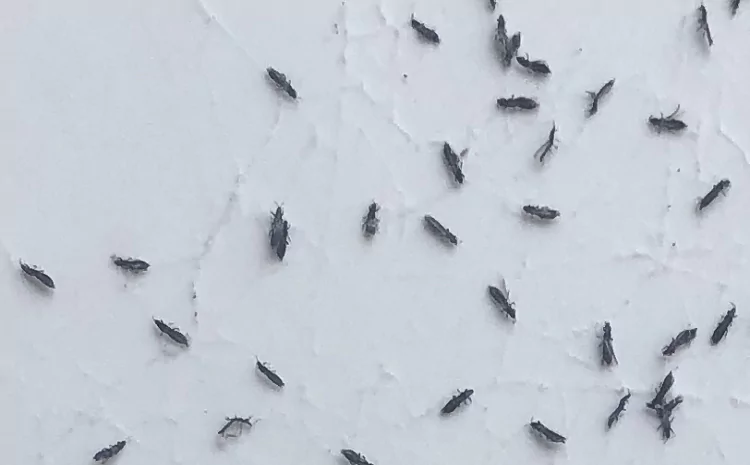Finding tiny black bugs in your hair can be a disturbing experience. Whether it’s an itchy scalp or the sight of little bugs, it’s important to identify and address the issue promptly. This article will help you understand what these bugs might be, how to identify them, and how to deal with them effectively.
Key Takeaways
- Tiny black bugs in hair can be lice, mites, or other insects.
- Identifying the type of bug is crucial for proper treatment.
- Regular hygiene and prompt treatment can prevent and manage infestations.
Introduction
Having tiny black bugs in your hair can be alarming and uncomfortable. These little bugs can cause itching and irritation, and it’s essential to determine what they are to address the problem effectively. This article will explore common types of tiny black bugs that might infest your hair, how to identify them, and the best ways to get rid of them.
Common Types of Tiny Black Bugs in Hair
Lice
Lice are one of the most common causes of tiny black bugs in hair. They are small, wingless insects that feed on human blood and can cause intense itching.
| Bug Type | Description | Size | Color | Common Symptoms |
|---|---|---|---|---|
| Head Lice | Wingless insects that live on the scalp | 2-3 mm | Grayish-white, can appear black in dark hair | Itching, visible nits (eggs) |
Mites
Mites are tiny arachnids that can infest hair and skin. Scabies mites and hair follicle mites are common culprits.
| Bug Type | Description | Size | Color | Common Symptoms |
|---|---|---|---|---|
| Scabies Mites | Burrow into the skin causing intense itching | 0.3-0.4 mm | White, can appear dark | Itching, rash |
| Hair Follicle Mites | Live in hair follicles and sebaceous glands | 0.3-0.4 mm | Transparent, can appear dark | Itching, inflammation |
Other Insects
Various other tiny insects can find their way into your hair. These include small beetles, thrips, and booklice.
| Bug Type | Description | Size | Color | Common Symptoms |
|---|---|---|---|---|
| Thrips | Small, slender insects that can occasionally be found in hair | 1-2 mm | Dark brown or black | Itching, irritation |
| Booklice | Small insects that feed on mold and other organic matter | 1-2 mm | Pale, can appear dark | Itching, visible movement in hair |
Identifying Tiny Black Bugs in Hair
Visual Inspection
To identify tiny black bugs in hair, start with a thorough visual inspection. Use a fine-toothed comb and a magnifying glass to look for any moving insects or their eggs.
Symptoms
Consider the symptoms you’re experiencing. Intense itching, visible nits, or a rash can indicate lice or mites.
Professional Diagnosis
If you can’t identify the bug yourself, consult a dermatologist or a healthcare professional for a proper diagnosis and treatment plan.
How to Get Rid of Tiny Black Bugs in Hair
Lice Treatment
If you identify lice as the culprit, there are several effective treatments available.
| Treatment Type | Description | Application |
|---|---|---|
| Over-the-counter Shampoos | Medicated shampoos containing permethrin or pyrethrin | Apply as directed on the packaging |
| Prescription Treatments | Stronger treatments like ivermectin or malathion | Use under medical supervision |
| Combing | Regularly combing hair with a fine-toothed lice comb | Do this daily to remove nits and lice |
Mite Treatment
Treating mites involves different approaches, depending on the type of mite.
| Treatment Type | Description | Application |
|---|---|---|
| Topical Creams | Prescription creams like permethrin or crotamiton | Apply as directed by a doctor |
| Oral Medications | Medications like ivermectin for severe infestations | Take as prescribed |
| Hygiene Measures | Regular washing of clothes and bedding | Maintain cleanliness to prevent re-infestation |
General Insect Treatment
For other tiny insects, general insect treatment measures can be effective.
| Treatment Type | Description | Application |
|---|---|---|
| Regular Washing | Frequent washing of hair with mild shampoo | Keeps hair clean and free of insects |
| Insecticidal Shampoos | Shampoos designed to kill insects | Use as directed on the packaging |
| Environmental Control | Cleaning and vacuuming living areas | Reduces chances of re-infestation |
Preventing Infestations
Personal Hygiene
Maintaining good personal hygiene is crucial. Regularly wash your hair and scalp with shampoo and keep your hair brushed.
Avoiding Contact
Avoid close contact with infested individuals or contaminated items. Do not share hats, combs, or pillows.
Home Cleanliness
Keep your living environment clean. Regularly vacuum carpets and upholstery and wash bedding in hot water.
Common Myths About Tiny Black Bugs in Hair
Only Dirty People Get Infested
Infestations can happen to anyone, regardless of cleanliness. Even the cleanest people can get lice or mites.
Home Remedies Are Always Effective
While some home remedies might help, professional treatments are often more effective and safer. Always consult a healthcare professional.
Bugs Can Jump from Person to Person
Tiny black bugs in hair like lice cannot jump or fly. They spread through direct contact or sharing personal items.
Conclusion
Finding tiny black bugs in hair can be distressing, but understanding what they are and how to deal with them can ease your concerns. Lice, mites, and other insects can all cause infestations, but with proper identification and treatment, you can effectively eliminate them. Maintaining good hygiene, avoiding close contact with infested individuals, and keeping your living environment clean are key steps in preventing infestations. If you’re ever in doubt, don’t hesitate to seek professional help to ensure a proper diagnosis and treatment plan.

Mark Thompson, a seasoned pest controller, is renowned for his expertise in keeping homes and businesses free from unwanted intruders. With a passion for environmental sustainability and a deep understanding of pest behavior, Mark has become a trusted authority in the industry.
